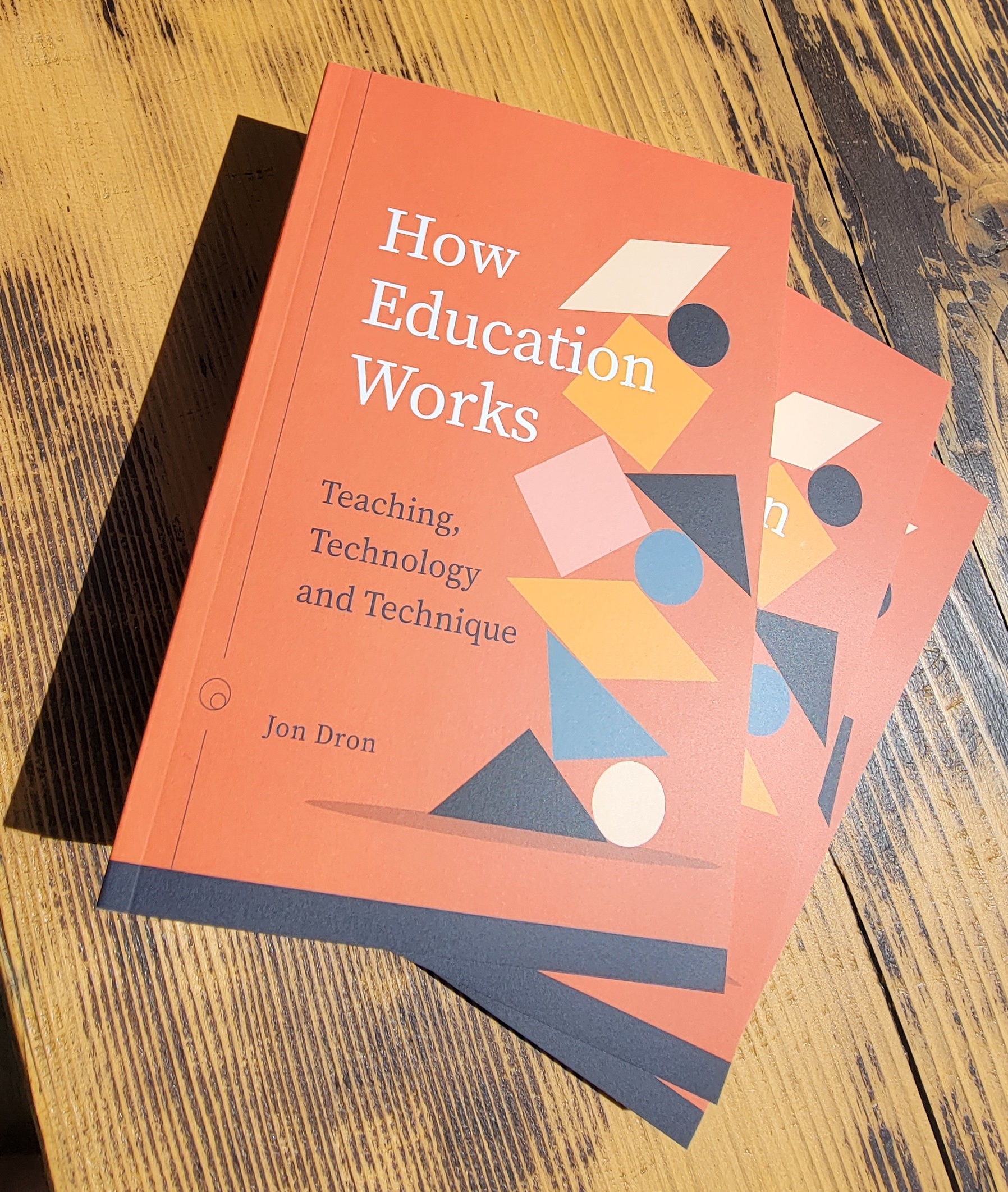UPDATE: the video of my talk is now available at https://www.youtube.com/watch?v=ji0jjifFXTs (slides and audio only) …
 These are the slides from my opening keynote at SITE ‘24 today, at Planet Hollywood in Las Vegas. The talk was based closely on some of the main ideas in How Education Works. I’d written an over-ambitious abstract promising answers to many questions and concerns, that I did just about cover but far too broadly. For counter balance, therefore, I tried to keep the focus on a single message – t’aint what you do, it’s the way that you do it (which is the epigraph for the book) – and, because it was Vegas, I felt that I had to do a show, so I ended the session with a short ukulele version of the song of that name. I had fun, and a few people tried to sing along. The keynote conversation that followed was most enjoyable – wonderful people with wonderful ideas, and the hour allotted to it gave us time to explore all of them.
These are the slides from my opening keynote at SITE ‘24 today, at Planet Hollywood in Las Vegas. The talk was based closely on some of the main ideas in How Education Works. I’d written an over-ambitious abstract promising answers to many questions and concerns, that I did just about cover but far too broadly. For counter balance, therefore, I tried to keep the focus on a single message – t’aint what you do, it’s the way that you do it (which is the epigraph for the book) – and, because it was Vegas, I felt that I had to do a show, so I ended the session with a short ukulele version of the song of that name. I had fun, and a few people tried to sing along. The keynote conversation that followed was most enjoyable – wonderful people with wonderful ideas, and the hour allotted to it gave us time to explore all of them.
Here is that bloated abstract:
Abstract: All of us are learning technologists, teaching others through the use of technologies, be they language, white boards, and pencils or computers, apps, and networks. We are all part of a vast, technology-mediated cognitive web in which a cast of millions – in formal education including teachers such as textbook authors, media producers, architects, software designers, system administrators, and, above all, learners themselves – co-participates in creating an endless, richly entwined tapestry of learning. This tapestry spreads far beyond formal acts of teaching, far back in time, and far into the future, weaving in and helping to form not just the learning of individuals but the collective intelligence of the whole human race. Everyone’s learning journey both differs from and is intertwingled with that of everyone else. Education is an overwhelmingly complex and unpredictable technological system in which coarse patterns and average effects can be found but, except in the most rigid, invariant, minor details, of which individual predictions cannot be accurately made. No learner is average, and outcomes are always greater than what is intended. The beat of a butterfly’s wing in Timbuktu can radically affect the experience of a learner in Toronto. A slight variation in tone of voice can make all the difference between a life-transforming learning experience and a lifelong aversion to a subject. Beautifully crafted, research-informed teaching methods can be completely ineffective, while poor teaching, or even the absence of it, can result in profoundly affective learning. For all our efforts to understand and control it, education as a technological process is far closer to art than to engineering. What we do is usually far less significant than the idiosyncratic way that we do it, and how much we care for the subject, our students, and our craft is often far more important than the pedagogical methods we use. In this talk I will discuss what all of this implies for how we should teach, for how we understand teaching, and for how we research the massively intertwingled processes and tools of teaching. Along the way I will explain why there is no significant difference between measured outcomes of online or in-person learning, the futility of teaching to learning styles, the reason for the 2-sigma advantage of personal tuition, the surprising commonalities between behaviourist, cognitivist, constructivist models of learning and teaching, the nature of literacies, and the failure of reductive research methods in education. It will be fun






